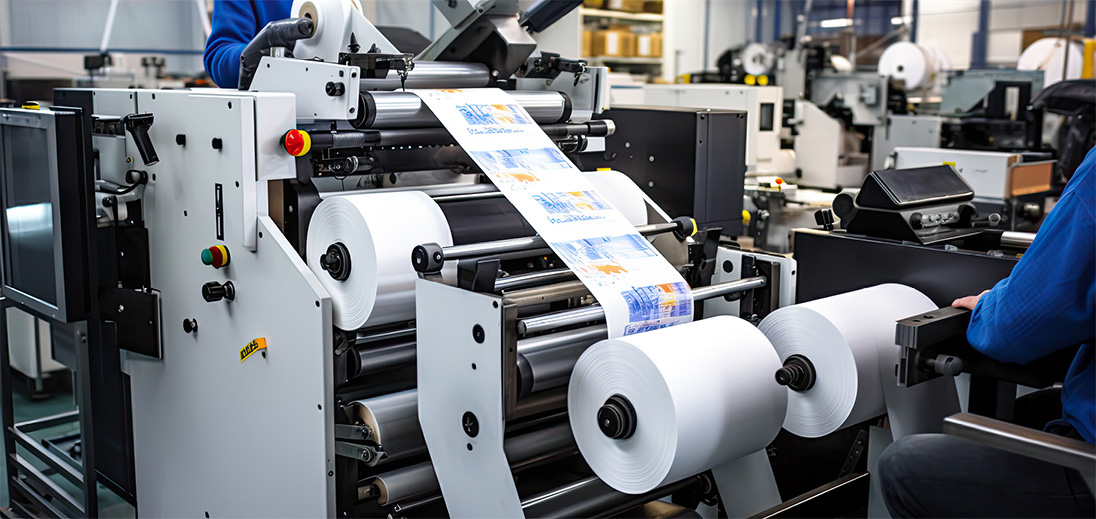How AI helps the print industry to be more sustainable?
Sustainability is not just a trend. It is now a core concern for all actors in the print industry. Recently, artificial intelligence has played a critical role in making the print industry more sustainable.
Sustainability is not just a trend. It is now a core concern for all actors in the print industry. Recently, artificial intelligence has played a critical role in making the print industry more sustainable.
While using and wasting a lot of material was commonplace in traditional printing, the very DNA of an entire industry is now shifting for the better.
In November 2022, OpenAI released the first public version of ChatGPT, a chatbot using generative artificial intelligence. It’s just one type of artificial intelligence among many others.
But if some people still perceive AI as a threat while others see it as an all-fits-one solution, the printing industry harnesses the power of AI. They integrated it into their processes with remarkable results.
Many of them use AI as what it is supposed to be: a tool to do some actions better, quicker, and with less effort. As you will read in this article, AI is now a key ally in making the print industry more sustainable.
AI-powered printing systems to help reduce waste
Waste generation has always been a burning challenge for the printing and packaging industry. Traditional processes often lead to misprints and excess material. It has an impact on both the environment and companies profitability. The good news is we now have artificial intelligence to enhance material efficiency and reduce waste in the printing process. AI-powered printing systems have shown convincing results and great benefits:
- Optimization of the material usage: by analysing printing patterns, AI algorithms optimise material use,
- Fewer consumables: AI calculates the exact amount of ink, laminates and other consumables needed for each application,
- Better print quality: depending on the type of application, AI adjusts print settings for optimal print quality and reduced misprints,
- Higher productivity: printers can entrust automatable tasks to AI, like document sorting, tiling , duplex printing, and ink level monitoring,
- Lower costs: by reducing material buying budget, energy consumption, and waste disposal costs,
- Improved sustainability: AI-powered printing systems contribute to carbon footprint reduction.
AI-driven material waste reduction is a powerful solution for companies wanting to optimise their printing processes, reduce costs, and become more sustainable.
AI-enabled predictive maintenance for more sustainable manufacturing
Traditional printing processes were doing reactive maintenance. Waiting for a machine to break down before lifting a finger incurs higher costs, both economically and environmentally. Calling the breakdown service for emergency repair is costly. Buying a brand new digital printer or finishing equipment is even more. And what do we do with the broken machine? It generates tremendous waste for the environment.
Predicting breakdowns
AI-enabled predictive maintenance is a game-changer. It not only predicts breakdowns before they occur, but it also plans for proactive maintenance interventions. Indeed, AI monitors equipment in real-time and analyses past data to predict better when a machine is likely to fail.
Improving performance
This proactive approach minimises downtime, resulting in higher operational efficiency, hence profitability. According to a recent study, plants using AI in their manufacturing processes have witnessed up to a 30% reduction in downtime and up to a 25% increase in production capacity, let alone reduced energy consumption.
Benefiting the environment
In a longer time frame, AI-enabled predictive maintenance extends the lifespan of printing equipment, which means a better payback per machine. It results in a positive impact on sustainability with less waste and fewer resources used for emergency repairs.
Digitising processes in the print industry for a reduced footprint
Traditional printing processes relied on human work, ink and materials. We’re talking here about tasks like order processing and inventory management. Error is human. These methods can lead to a significant amount of material waste.
Today, AI makes it easy to automate, shorten, and enhance the accuracy of these tasks. The shift to AI-driven digitised processes bears benefits on multiple levels: less material and ink consumption, streamlined operations, and more flexible printing solutions.
Benefiting everyone
Digitising printing processes benefits everyone in the value chain. From a customer standpoint, it means quicker production times at lower costs, enhanced print quality, and greater customisation possibilities.
For businesses in the printing industry, it means a reduced ecological footprint. AI-powered systems facilitate the shift to digital workflows. They can predict the exact material needs and enhance operational efficiency—all of these result in reducing waste and overproduction.
When AI serves sustainability
At times of increasing environmental consciousness, AI can help reduce the ecological footprint of companies.
Beneath their apparent duality, sustainability and artificial intelligence can drive the future of the print industry. To be more accurate here, AI serves as a tool to meet sustainability expectations, and to create a greener future for the print industry. Companies embracing artificial intelligence enhance their environmental responsibility while maintaining competitive leadership. AI even helps businesses transition to sustainable materials and practices by suggesting sustainable alternatives.







